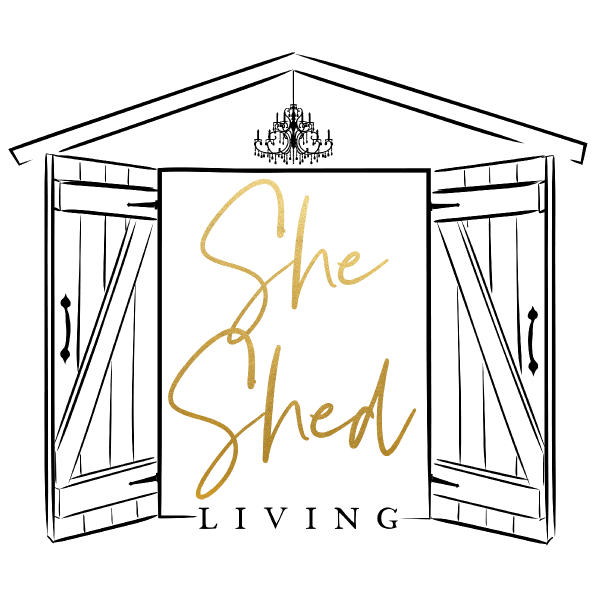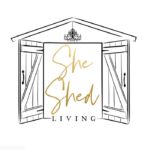Valerie Allen rebuilds her garden from scratch after a devastating hurricane came through northeastern Canada in 2022. Her large, sunny greenhouse serves as command center.

When this photo was taken of Valerie Allen’s handmade garden shed and planter box, her yard was surrounded with a bevy of large, mature trees. Then Hurricane Fiona struck Prince Edward Island, destroying buildings and uprooting hundreds of trees. The storm completely upended all of the trees in the Allens’ backyard, turning what was once a shady park-like setting into a full-sun backyard.
Valerie and her husband surveyed the grounds and after mourning the losses decided to make the best of what they had left. As a silver lining, the loss of shade meant that the growing season would extend from just two months in summer to five months including late spring. Also, until any trees could grow back, Valerie looked for ways to use shrubbery and other privacy elements for shade and shelter.

Making Lemonade: The New Garden Begins
Valerie Allen has always been a lover and tender of gardens. She remembers her parents building a rock wall for plants around their home when she was six and was captivated by the process. “It’s one of my earliest memories,” she says. “My sister owns that home now and she still tends to the rock garden.”
Recently retired from a teaching career, Valerie was ready to devote many hours of her time to building a new garden. Now, she could consider growing varieties from seed and increasing the varieties of plants. Her first step: a garden journal. Because she is new to growing flowers and vegetables from seed, Valerie wants to chronicle her experiments and learn from what works and what doesn’t.
“I’m particularly excited about growing cutting flowers,” Valerie says. So far she has selected dahlias, cosmos, zinnias and sunflowers, among others, keeping them in a pale palette. For vegetables, Valerie will try her hand at succession planting with lettuces, which if successful ensures a healthy supply of greens for months at a time.

Raised Planters
Valerie began experimenting with raised planter boxes before the storm. She liked how they looked – they provided some structure and pattern to a flat grassy area. Next year, more planter boxes will be installed and filled with vegetable and flower seedlings, once they’ve established indoors.
Her plan includes eight steel raised beds, two of which will border the back end of the cutting garden. Those two will be flanked by trellises that, when planted with climbing flowers, will create a wall. Surrounding the greenhouse will be fencing and hydrangea shrubs, to help fill in the loss of all her beloved maples.

Then, see the triple archways between two sets of smaller beds? Valerie plans to build her own cattle-fencing trellises to support climbing vegetables and flowers. Right now, she’s thinking scarlet runner beans, climbing nasturtium and cucumber.
Planning Is Part of the Fun
After a long career as a teacher (just retired last summer) and the trauma of such a severe storm and property damage, Valerie strove to find the activities that nourished her. Gardening and tending to her outdoor kingdom felt both exciting and therapeutic. “We built the greenhouse in anticipation of my retirement and the fact that I’d have more time to garden,” Valerie explains. “I’m excited to try my hand at starting lots of seeds, both flower and vegetable, and to keep good journal notes about what has worked and what to do differently next year. The planning process is filled with such pleasure for me!”

The greenhouse is perfect year round for wintering delicate plants and even propagating (see the nasturtiums at right?) Recently Valerie added some flair to it by staining/painting a diamond pattern on the floor. (See the whole tutorial in Valerie’s Instagram Highlights “Checkerboard Floor“.)
We will catch up with Valerie in late summer of next year, to see what she has accomplished. In the meantime, here are a few of her tips for starting your own cottage garden:
- Raised planters are idea for adding interest and varying heights to a flat yard. They also keep the soil in perfect condition for whatever you wish to grow.
- Be attentive to your area’s growing conditions (climate, soil, moisture) and plant wisely.
- Use grid paper and create a plan that includes scaled measurements. Use color pencils to enhance the greenery and color that will grow there!
- Make a journal of what you plant; continue with the successes and learn from the fails.
Miracles and lessons take place in Valerie’s cottage garden – read “Tending the Cottage Garden,” Part 2




Leave a Reply